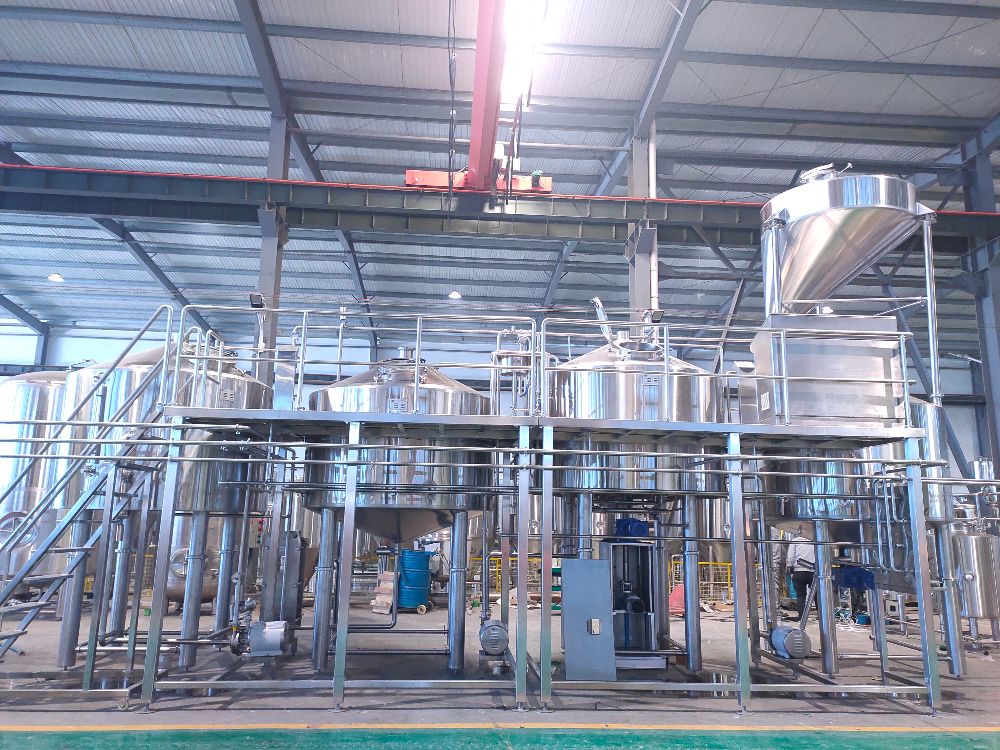The Influence of Feeding Temperature on Beer Quality
- Dec 05, 2020
- 126
- tiantai
The Influence of Feeding Temperature on Beer Quality
When brewing via beer brewhouse starts formally, feeding temp is first thing we need to consider seriously.
New research shows that if a high temperature (such as 62 ° C) feeding process is used, not only the saccharification time is short, which is conducive to energy saving, but also very beneficial to the foam and taste stability of beer for the following reasons:
(1) Reduce protein breakdown.
(2) The polymer nitrogen content is large.
(3) Because of the higher viscosity of beer, beer has better foam retention.
(4) The content of α-amino nitrogen in wort is relatively low.
(5) Only a few amino acids participate in Maillard reactions.
Changes in aging substances in beer at different cutting temperatures. The higher the temperature (such as 62 ° C), the lower the aging substance composition and the more stable the taste.
The relationship between low-temperature cutting and high-temperature cutting and fatty acid oxidase activity. The higher the temperature of the cutting, the lower the fatty acid oxidase activity, the less easily the wort and beer are oxidized, and the more stable the taste.
In general, the foaming of beer can be improved at higher feed temperatures. This phenomenon may be caused by a certain amount of polymer nitrogen. A certain molecular weight protein, such as the foaming protein with a molecular weight of 4100, the capsule protein, and the sticky substances play a decisive role in the foam and promote the formation of the foam. In most cases, the protein that causes tannin precipitation increases significantly at 60 ° C。

Edited by Alisa
Email:[email protected]
When brewing via beer brewhouse starts formally, feeding temp is first thing we need to consider seriously.
New research shows that if a high temperature (such as 62 ° C) feeding process is used, not only the saccharification time is short, which is conducive to energy saving, but also very beneficial to the foam and taste stability of beer for the following reasons:
(1) Reduce protein breakdown.
(2) The polymer nitrogen content is large.
(3) Because of the higher viscosity of beer, beer has better foam retention.
(4) The content of α-amino nitrogen in wort is relatively low.
(5) Only a few amino acids participate in Maillard reactions.
Changes in aging substances in beer at different cutting temperatures. The higher the temperature (such as 62 ° C), the lower the aging substance composition and the more stable the taste.
The relationship between low-temperature cutting and high-temperature cutting and fatty acid oxidase activity. The higher the temperature of the cutting, the lower the fatty acid oxidase activity, the less easily the wort and beer are oxidized, and the more stable the taste.
In general, the foaming of beer can be improved at higher feed temperatures. This phenomenon may be caused by a certain amount of polymer nitrogen. A certain molecular weight protein, such as the foaming protein with a molecular weight of 4100, the capsule protein, and the sticky substances play a decisive role in the foam and promote the formation of the foam. In most cases, the protein that causes tannin precipitation increases significantly at 60 ° C。

Edited by Alisa
Email:[email protected]

.jpg)


